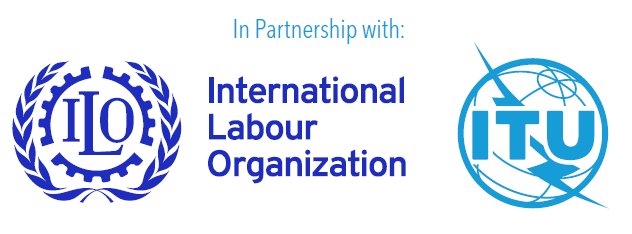1.2 Accessibility standards
As established in Article 9 of the CRPD, the right of persons with disabilities to accessibility must be ensured through the strict implementation of accessibility standards.4 Article 9 sets out the accessibility requirements and standards which States Parties must develop, promulgate and monitor. Web accessibility standards provide organizations with practical direction on how to implement guidelines aimed at making web content and online services accessible and inclusive to everyone, including job seekers, candidates and employees with disabilities, including those who need to use assistive technologies to interact with such content and services.
Level AA compliance with the Web Content Accessibility Guidelines (WCAG) 2.1, developed as part of the World Wide Web Consortium’s (W3C) Web Accessibility Initiative, sets the global standard (including success criteria and best practices) for making web content more accessible to persons with different types of disabilities. Following the adoption of the CRPD in December 2006, the United Nations system has published a series of accessibility recommendations to assist content providers, designers and developers in all United Nations entities in producing accessible web content, including online job application platforms. Based on WCAG 2.1, these recommendations aim to ensure that websites comply with accessibility standards while still in the development phase, as a prerequisite for their deployment. It is worth noting that WCAG 2.2 expands on WCAG 2.1 without undermining or superseding it. WCAG 2.2. adds the following new success criteria, including new definitions and guidelines for their organization:
|
|
accessible authentication |
|
|
dragging movements |
|
|
consistent help |
|
|
page break navigation |
|
|
focus appearance (minimum) |
|
|
focus appearance (enhanced) |
|
|
visible controls |
|
|
target size (minimum) |
|
|
redundant entry |
In turn, WCAG 3.0 (currently in draft version) incorporates content from both the User Agent Accessibility Guidelines 2.0 and the Authoring Tool Accessibility Guidelines 2.0. Compared with earlier versions, WCAG 3.0 includes additional tests and different scoring mechanisms; it is therefore not backwards-compatible with the second series of WCAG and must be viewed as an alternative set of guidelines. New content in WCAG 3.0 covers:
|
|
the needs of persons with a wider range of disabilities; |
|
|
mobile and desktop applications, alongside web content; |
|
|
new guidelines and new tests; |
|
|
new scoring, by which a site or product is deemed accessible as long as persons with disabilities can use it (and no longer has to pass 100 per cent of the guideline criteria). |
In the European Union, Harmonized European Standard (EN) 301 549 applies to all forms of ICT, including online job application platforms, and includes technical requirements for digital accessibility. EN 301 549 provides presumption of conformity with the accessibility requirements set out in Directive (EU) 2016/2102 on the accessibility of the websites and mobile applications of public sector bodies (the Web Accessibility Directive), and the section of EN 301 549 that covers web accessibility standards draws on WCAG 2.1. This standard can be used by public authorities and other public sector bodies during procurement to ensure that ICT products and services, including websites, software, digital devices and online job application platforms, are more accessible and can be used by persons with a wide range of abilities.
More information about standards can be found in Annex 2.
